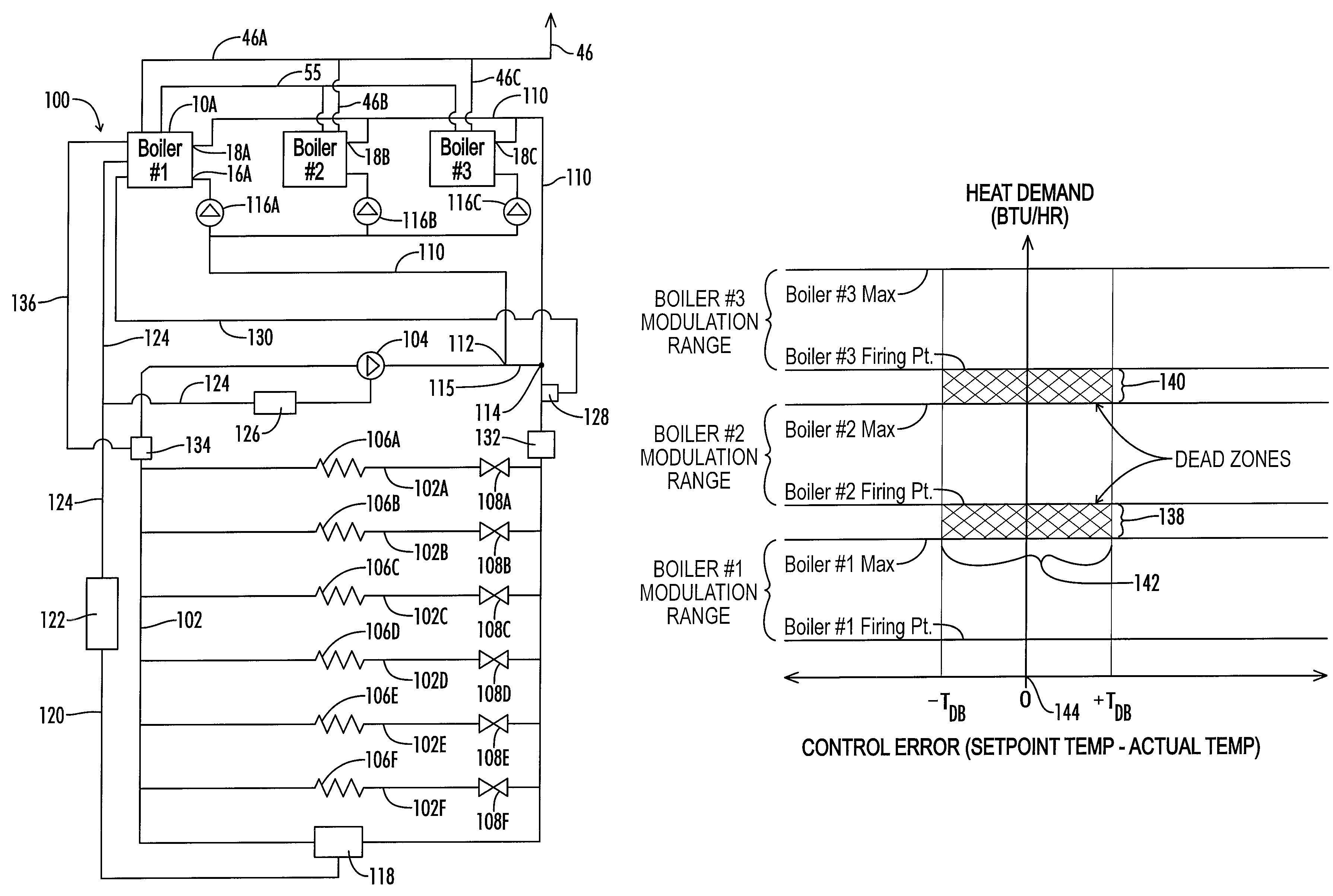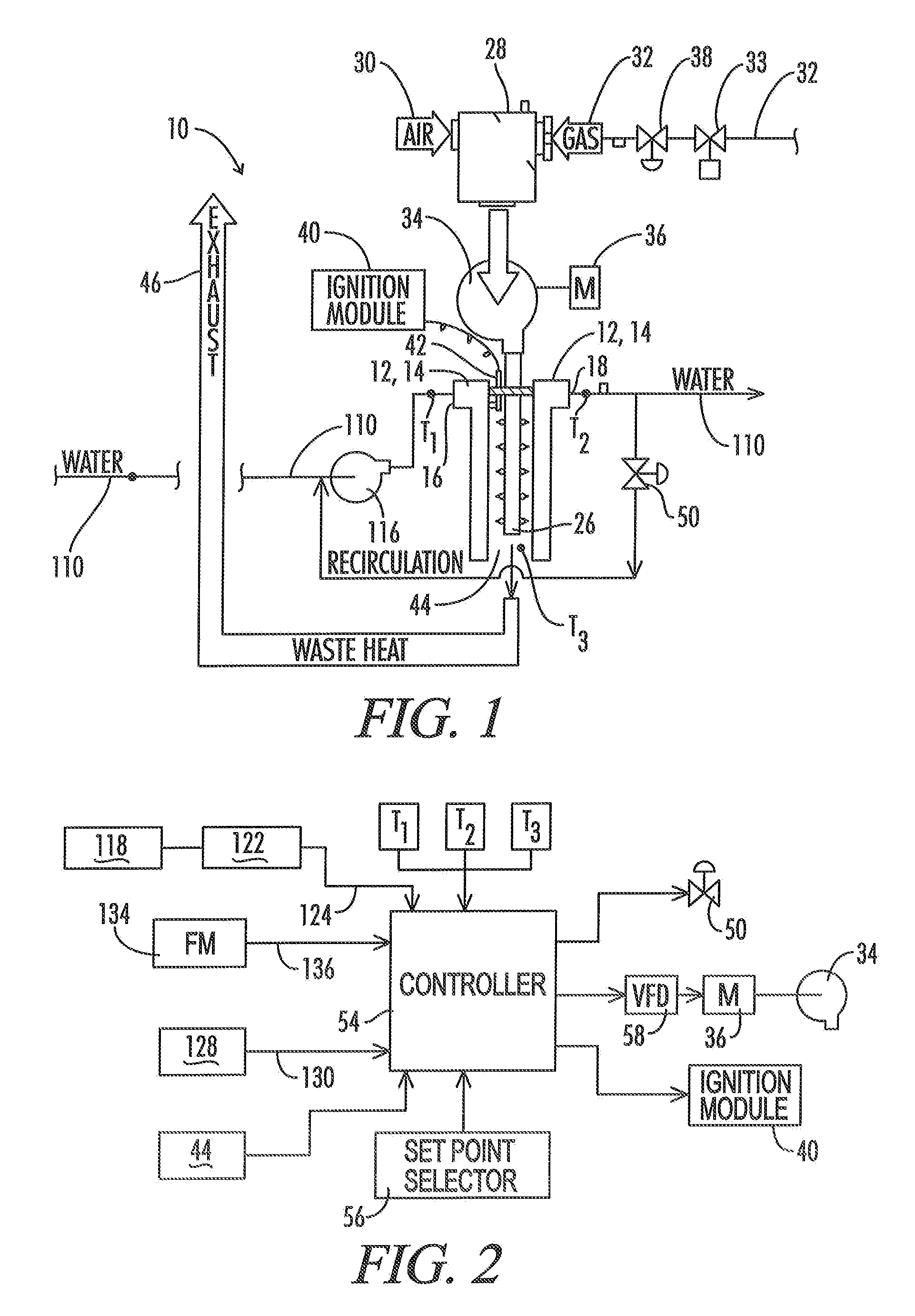Control system for modulating water heater
a control system and water heater technology, applied in water feed control, instruments, heating types, etc., can solve problems such as undesirable swings in system temperature, on and off cycle of boilers, and fluctuation of water flow rate in primary heating loops, so as to reduce the cycle of modulating water heaters. , the effect of preventing condensation of water vapor
- Summary
- Abstract
- Description
- Claims
- Application Information
AI Technical Summary
Benefits of technology
Problems solved by technology
Method used
Image
Examples
Embodiment Construction
[0029]Referring now to the drawings, and particularly to FIG. 1, the water heater or boiler apparatus of the present invention is shown and generally designated by the numeral 10. As used herein, the term water heater refers to an apparatus for heating water, including both steam boilers and water heaters that do not actually “boil” the water. Much of this discussion refers to the apparatus 10 as a boiler 10, but it will be understood that this description is equally applicable to water heaters that do not boil the water. The boiler 10 includes a heat exchanger 12 having a water side 14 having a water inlet 16 and a water outlet 18.
[0030]The general construction of the heat exchanger 12 may be similar to that disclosed for example in U.S. Pat. No. 4,793,800 to Vallett et al., or that in U.S. Pat. No. 6,694,926 to Baese et al., the details of which are incorporated herein by reference. As illustrated in FIGS. 2, 8 and 9 of Vallett et al., the heat exchanger is a multiple pass exchang...
PUM
 Login to View More
Login to View More Abstract
Description
Claims
Application Information
 Login to View More
Login to View More - R&D
- Intellectual Property
- Life Sciences
- Materials
- Tech Scout
- Unparalleled Data Quality
- Higher Quality Content
- 60% Fewer Hallucinations
Browse by: Latest US Patents, China's latest patents, Technical Efficacy Thesaurus, Application Domain, Technology Topic, Popular Technical Reports.
© 2025 PatSnap. All rights reserved.Legal|Privacy policy|Modern Slavery Act Transparency Statement|Sitemap|About US| Contact US: help@patsnap.com



